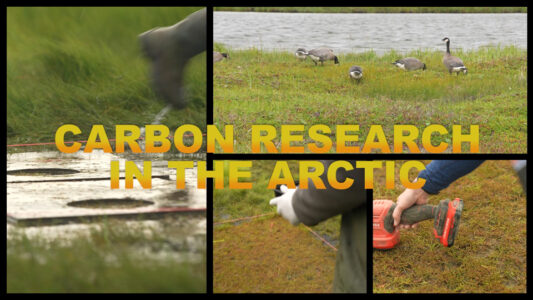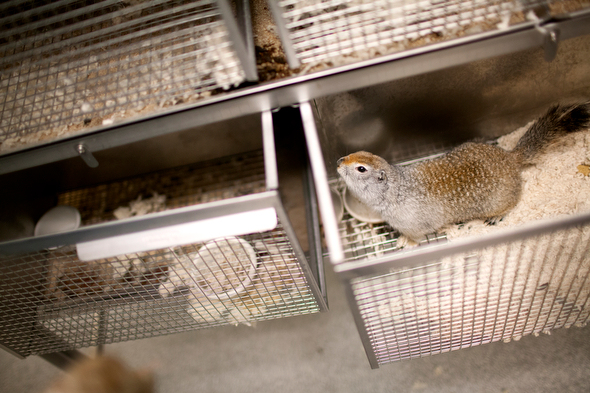
Arctic ground squirrels may seem like little more than a brief thrill for your dog on a hike up Flat Top, but scientists are convinced they’re worth a serious second look.
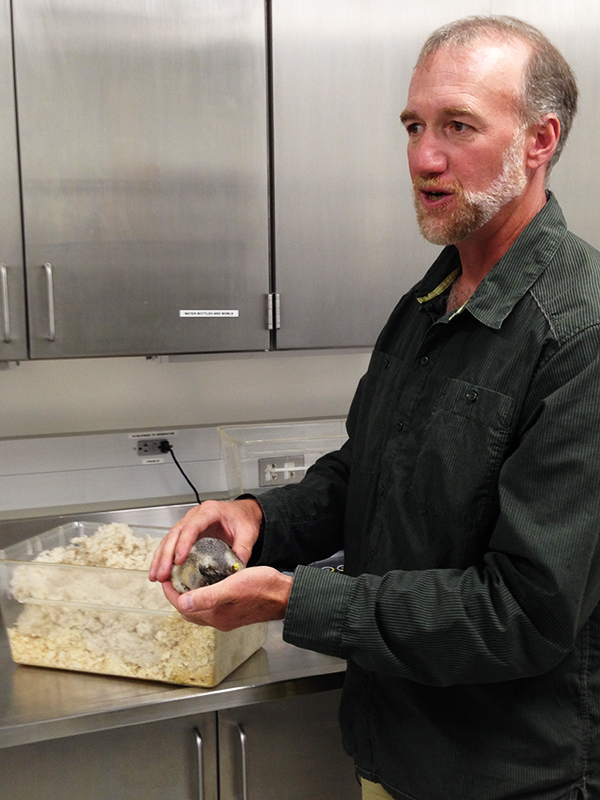
Ongoing research at UAA, funded jointly with UAF through a National Science Foundation grant, has documented their amazing biological clocks—unique among vertebrates—and prompted questions about how human health might benefit if we better understood their almost obsessive-compulsive adherence to their daily and annual routines.
It’s fact; these squirrels have their schedule down.
In summer, with only about 100 days to procreate and chow down before resuming 270 days of food-free, sub-zero hibernation, they methodically emerge and return to their underground burrows at the same time each day. Never mind that 24 hours of sunlight might mean more time to fatten up; they’re having none of it.
In contrast, reindeer and ptarmigan go “arrhythmic” under the midnight sun, giving them the potential advantage of foraging more opportunistically than our schedule-bound arctic ground squirrels. And humans? Alaskans well know our long sunlit days lead to drifting schedules—fishing or gardening at midnight, anyone?
On the yearly cycle, arctic ground squirrel rhythms vary a little by age and sex, but within those groups, they behave like well-calibrated armies.
Males come out of hibernation first and go back last. As they emerge from hibernation in early to mid-March, they resume normal body temperature and metabolic rate, ending their energy conservation mode. But they don’t emerge from the burrow yet. They sit in the dark cold and eat from a food cache they stored the prior fall. Twenty-one days later, these butterballs poke their heads out in search of a mate. Sex is the only item on their agenda; more food is weeks away when the tundra finally greens up.
Enter the females. They don’t emerge until the second week in April. Within a day or two, they’re pregnant! Moms gestate 5-7 hairless pups for 25 days, wean them for six weeks, then fatten up quickly. By the end of July, they’re headed back to the burrow, to be followed by males between the 10th of September and the first of October.
Below ground, hibernation behavior is extreme. Body temperatures drop to minus 2.9 Celsius, about three degrees below the freezing point of water. Literally they are super cooled, cold enough to freeze, but don’t. Their heart rate drops to a few beats per minute and they breathe episodically every few minutes. Come March, with no external cues like light or warming soils, males’ body temperatures climb and they begin the whole cycle again.
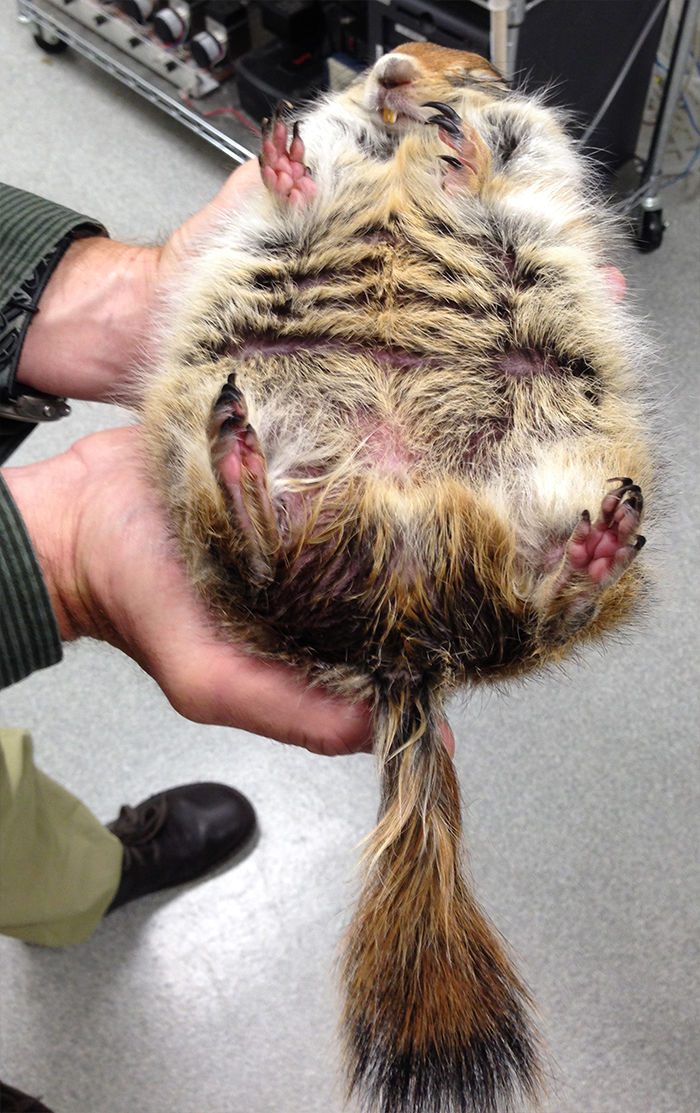
OK, so remind me again what this has to do with humans? Weren’t we talking about social jet lag? It all has to do with biological clocks.
Scientists are getting very curious about the link between body clocks and human diseases like diabetes, obesity, cardiovascular disease, Alzheimer’s and old-age senility.
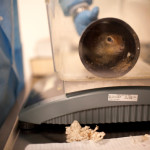
“We may be talking about squirrels and hibernation here,” says biologist Loren Buck, a lead investigator on the NSF-funded project, “and those are interesting questions in their own right. But virtually any human pathology you can think of is tied to a breakdown in clock function. The question is what is causal and what is effect. We don’t have the answer to that, but we know the clock is intimately involved.”
Social jet lag is a variation on the old familiar travel jet lag. A German scientist coined the more recent term and linked it to increased obesity. It happens when humans wake up to an early-morning alarm clock five days a week, then sleep late Saturday and Sunday, shifting to a new rhythm. When Monday morning’s alarm rings, they’re out of sync, a discomfort arctic ground squirrels avoid with their persistent schedules.
Given that arctic ground squirrels have adapted and survived tens of thousands of years in the extreme arctic, what else can their rigid daily and annual routines tell us about human health?

Buck has been pondering their biological clocks for the better part of three decades, including how climate change may intervene. A former commercial fisherman in the Gulf of Alaska, he credits his science career to the Exxon Valdez oil spill.
“In 1989 I was standing in a net shed, hanging a new herring net,” he said, age 24 at the time. “And I heard on NPR, as we were listening and tying knots, that there was a horrible oil spill in Prince William Sound.”
He remembers thinking about the tough times ahead for those fishermen. Little did he know the oil would spread across the gulf and even into Bristol Bay.
“We went out and tried to fish,” he said, “and we got shut down.”
A check arrived from Exxon to help him through the winter. He asked his boat skipper what he should invest it in.
“He was a smart guy. He said, ‘At your age, you need to buy an education.’”
Thinking he’d be a schoolteacher in winter and a fisherman in summer, Buck graduated with degrees in biology and education at Montana State University, Billings. But along the way, he did undergraduate research with a hibernation biologist and an endocrinologist. He was hooked on the science, and headed to Brian Barnes’ lab at UAF, where he wrote his thesis on the physiology of arctic ground squirrels. He and Barnes are partners on their current project, still working to understand the daily and annual clocks of the arctic ground squirrel.
“Isn’t it worth looking at that clock to figure out how and why these animals don’t have the same problems humans would, living under the same light conditions?” he said.
-30-
Kathleen McCoy
Hometown U
Kathleen McCoy works at UAA, where she highlights campus life through social and online media.
Arctic Ground Squirrel Research project
Frontier Scientists: presenting scientific discovery in the Arctic and beyond
